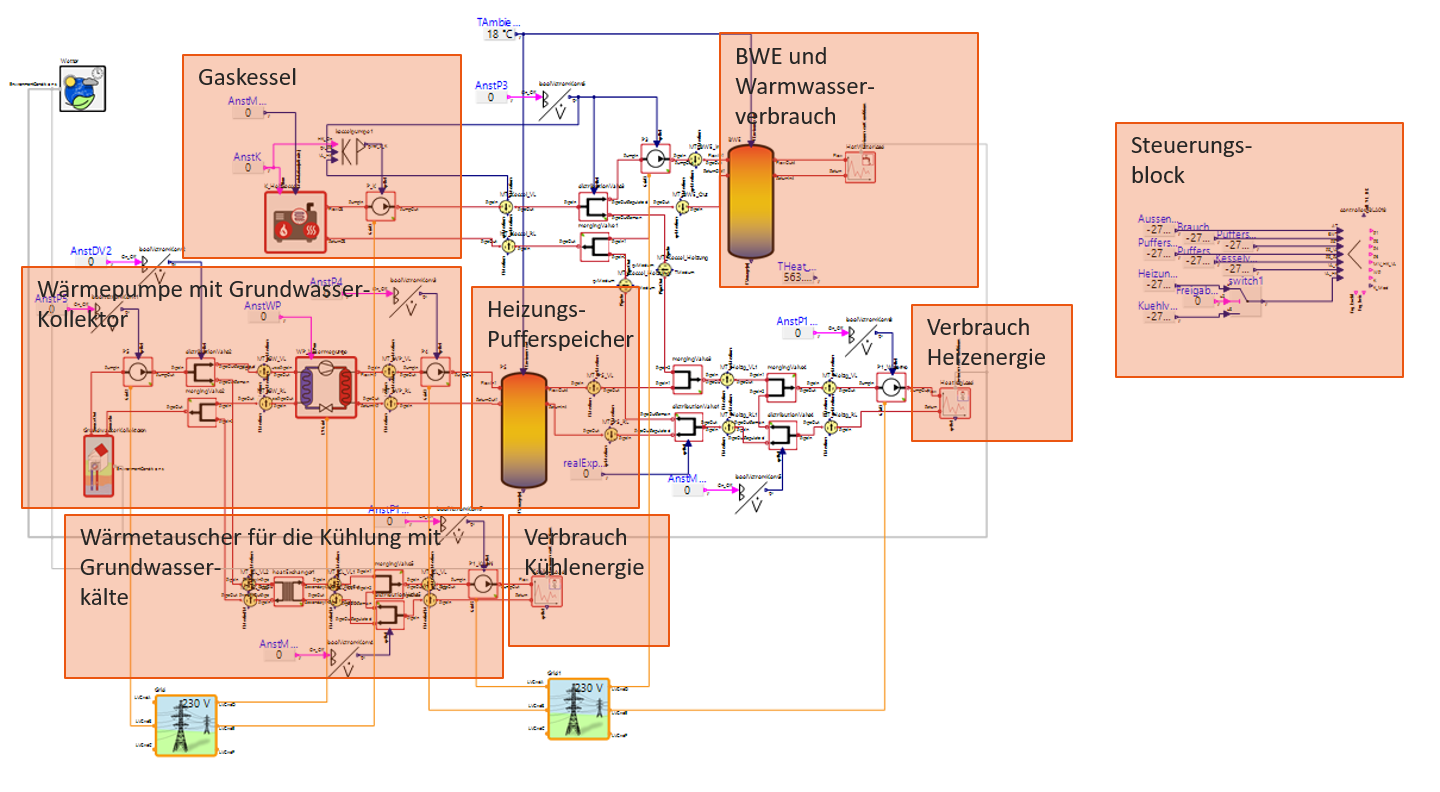The ” Arche ” project aims to significantly simplify the use of self-optimizing controller architectures for distributed energy systems in buildings and to design their technical handling. One of the challenges for energy management in this project is to guarantee supply security for the energy generator, storage and consumer. This challenge results from the use of different energy sources and energy conversion processes. Both the provision of an optimal energy mix and the energy-efficient operation of the energy storage require a holistic system and energy management concept in which the volatility of energy sources, efficiencies, time constants, operating conditions and restrictions, reliability and safety requirements, are optimally coordinated. During implementation, the establishment of self-optimising controller architectures for the reliable and safe operation of decentralised energy systems is the is essential to achieve the goal.
The core of this project is the research and development of a uniform approach to the design and commissioning of self-optimising control systems for distributed energy systems, for various types of buildings and fields of application. Prognostically, a significant reduction of the market barrier “design costs versus design benefits” is expected.
The core of this project is the research and development of a uniform approach to the design and commissioning of self-optimising control systems for distributed energy systems, for various types of buildings and fields of application. Prognostically, a significant reduction of the market barrier “design costs versus design benefits” is expected.
We, at EA Systems Dresden GmbH, have developed a Modelica-based simulation model of the energy supply system of the BLA018 demonstrator building in Berlin Pankow, which includes the currently installed control system. Furthermore, using GreenCity for SimulationX, the other three demonstrator plants were simulated and optimized.
Results so far
- Preparation of the controller described in Modelica by ESI ITI for integration into the real system
- Optimization calculations with the system model by EASD and Fraunhofer EAS
- Monitoring evaluations including automatically generated energy efficiency reports by Geo-En



